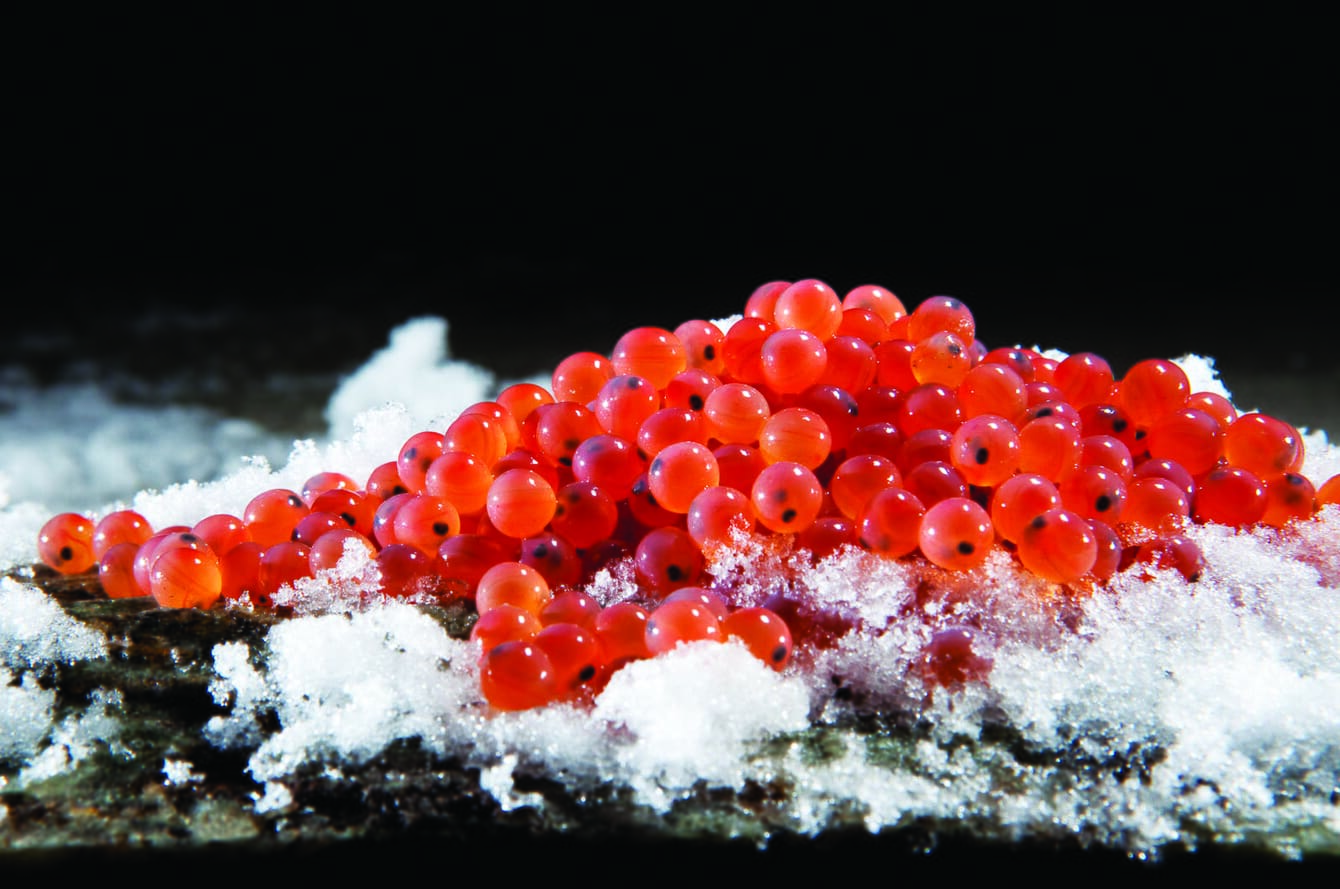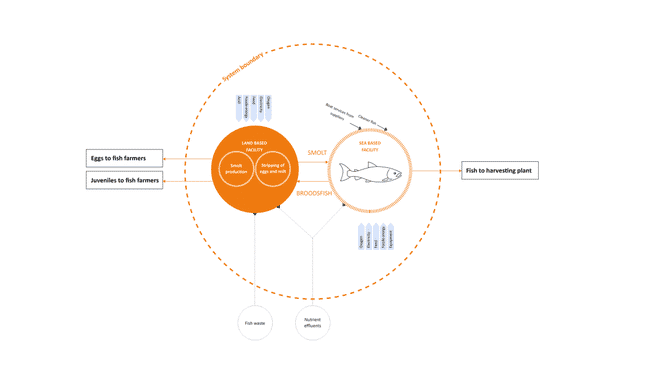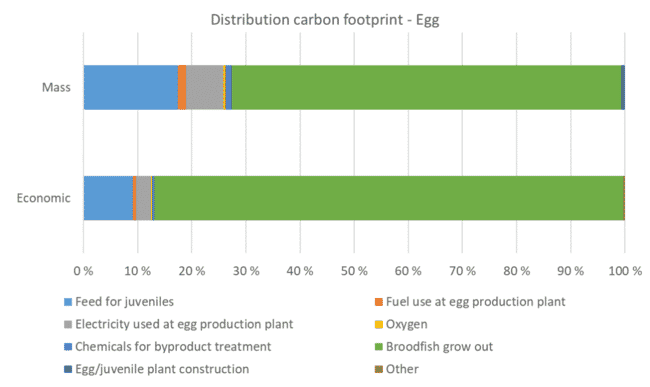
Recent analysis concluded that salmon eggs account for less than 0.1 percent of the carbon footprint of a Norwegian farmed salmon at harvest © Benchmark Plc
The carbon footprint, or climate footprint, of a fertilised egg has been calculated to 0.028 kg CO₂ equivalents, which is less than 0.1 percent of the carbon footprint of a Norwegian farmed salmon at harvest. This is a very good result. The genetic properties of the egg itself also contribute to reducing the carbon footprint of the fish farmers.
Cradle-to-gate analysis
AquaGen hired Asplan Viak AS to calculate the footprint through a "cradle-to-gate" analysis. The analysis covers the egg’s entire life cycle, from extraction of input raw materials until the egg is ready for sale to the aquaculture industry. The calculation is based on egg production at AquaGen’s facilities in Heim municipality, which includes both a land-based fish farming facility (harvesting of eggs and milt from broodstock fish and production of smolt of the next generation) and marine facilities (the smolt grows into harvestable fish and new broodstock fish), see figure 1.

The blue arrows are input factors, the two circles represent the production facilities needed in the production of eggs, dashed circles outside the system boundary are products that have not yet been included in the analysis. © AquaGen
Table 1 shows that the carbon footprint of an egg is very low compared to a typical salmon ready for harvest. Accounting for less than 0.1 percent with value allocation, or economic allocation. Allocation indicates how the total carbon footprint is distributed between different products, such as eggs, juveniles, fish for harvest and broodstock fish. The carbon footprint based on value allocation is the most common analysis, but mass allocation can also be used. With that analysis, the carbon footprint for salmonid eggs is reduced by 99 percent compared to value allocation (see table 1).

The results are presented as value and mass allocation, as is common for processes with several products. © AquaGen
During the production of broodstock fish, AquaGen sorts and removes fish that cannot become parents of the next generation. These are sent to the harvesting plant and have a carbon footprint equivalent to that of an average Norwegian farmed salmon (Ziegler et al. 2021). According to Poore and Nemecek (2018), the greenhouse gas emission per produced kilogram of edible protein from farmed fish is similar to that of poultry, but lower than for other protein sources; approximately 80 percent of the emissions for pigs, approximately 35 percent of the emissions for cattle from dairy herds and approximately 10 percent of the emissions for cattle from beef herds.
The LCA analysis pointed to feed and energy use as the most important greenhouse gas sources, see figure 2. The contribution from the feed is a combination of the feed's carbon footprint, feed utilisation and fish mortality. The two latter factors are strongly influenced by the properties inherent in the genetics inside the egg, but the genetic aspects are not currently included in the LCA analysis. Energy use is linked to fuel and electricity used in the farming facilities and by the vessels used in farming and transporting the fish.

The LCA analysis pointed to feed and energy use as the most important greenhouse gas sources © AquaGen
AquaGen’s journey to reduce greenhouse gas emissions from production activities
AquaGen is continuously working to reduce their carbon footprint. In recent years, the company has electrified all of their marine facilities, improved the energy efficiency of their land facilities and opted to buy electricity solely from renewable sources. The company also claims to work steadily to improve biological factors that affect greenhouse gas emissions in our production. They have adopted video-based feeding to improve feed utilisation and take a preventative approach when addressing diseases, parasites and try to keep handling at a minimum – keeping overall mortalities low. However, the company says they want to improve further. AquaGen says it will explore water recycling at their land-based facilities, produce renewable energy locally and replace all fossil fuels with renewable energy sources. In addition, they want to further improve the fish's biological performance – overhauling the core of their breeding work.
Genetic selection reduces the fish's carbon footprint
The company believes that this research shows that the carbon footprint of an egg is very small compared to that of a salmon ready for harvest. In addition, the egg itself contributes to reducing the greenhouse gas emissions from production at the fish farmers.

AquaGen believes it can create eggs that are specially selected for a high growth rate and a reduced feed conversion rate in the fish © AquaGen
The firm claims that its eggs are specially selected for a high growth rate and a reduced feed conversion rate in the fish. A lower feed conversion rate means fewer greenhouse gas emissions from the feed. A high growth rate means a high turnover rate throughout the production. The shortened production time reduces the time the fish are exposed to sea lice during the grow-out phase in the sea and ensures efficient utilisation of fixed installations such as boats, cages, feed rafts and moorings. In addition, the eggs are selected for increased resistance to diseases that cause mortality and reduced growth. This facilitates good fish welfare, survival, resource utilisation and efficiency throughout the entire production cycle.
It appears that the genetic basis for the fish's biological performance has a great influence on the carbon footprint.




